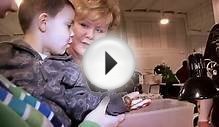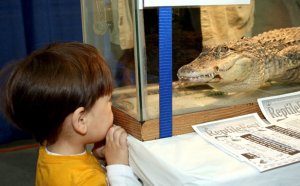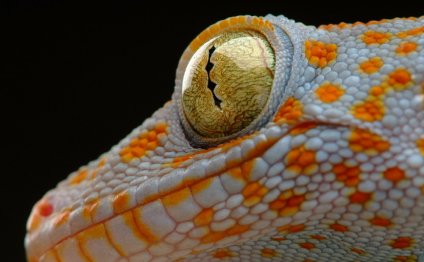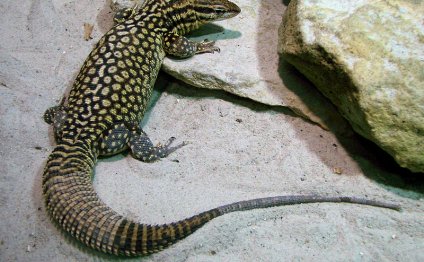
Which Reptiles Make the Best Pets?
 Editor’s note: Prospective school pets, like all pets, need to be examined by a veterinarian and given a clean bill of health before being welcomed into the classroom for fun and friendship. They also need to see a veterinarian regularly. That’s because pets of all kinds can harbor parasites and other health problems. Exotic pets should not be exposed to temperature extremes, so if your school’s thermostat is turned up or down on weekends, they should be taken home by a student or teacher. Finally, young students must always be supervised while handling class pets and should always wash their hands after doing so.
Editor’s note: Prospective school pets, like all pets, need to be examined by a veterinarian and given a clean bill of health before being welcomed into the classroom for fun and friendship. They also need to see a veterinarian regularly. That’s because pets of all kinds can harbor parasites and other health problems. Exotic pets should not be exposed to temperature extremes, so if your school’s thermostat is turned up or down on weekends, they should be taken home by a student or teacher. Finally, young students must always be supervised while handling class pets and should always wash their hands after doing so.
Thinkstock
Leopard geckos are docile, relatively small and fairly simple to care for — making them great classroom pets.
Pets and kids — for many of us they go hand in hand. I can’t imagine growing up without a pet. Pets teach children so many important lessons: how to responsibly care for another living thing, how to love unconditionally, and how to deal with life and death. I am always saddened when I hear a child doesn’t or can’t have a pet. That’s where the classroom pet comes in. Although certain schools have rules about what kinds of pets can be housed in the classroom based on allergies, exposure to infection, local laws, etc., I am constantly asked what animals make the best classroom pets. Of course, the short answer depends on what type of animal — scaly, feathered or furred — the kids and teachers are most interested in. The long answer is that there are three types of pets I readily recommend for the classroom.
1. Classroom-Friendly Reptiles
Reptiles can make great classroom pets because they are quiet and interesting to watch and generally live a long time. The simplest reptiles to start with are leopard geckos, bearded dragons and corn snakes. All are fairly docile and remain relatively small. They are colorful and fairly simple to take care of as far as reptiles go. In comparison to small mammals or birds that have very high metabolisms and require daily feeding, these reptiles have slow metabolisms and can generally go a couple of days without eating. The benefit of that is, if they are healthy, they need not be fed over the typical two-day weekend when school is closed.
Like all reptiles, these kid-friendly species have specific light and heat requirements and must be fed specific diets in order to remain healthy. All should be provided with ultraviolet (UV) light for several hours a day. This allows them to make adequate vitamin D in their skin to help them absorb essential nutrients from their food. Leopard geckos are insectivores; they eat insects like mealworms and crickets. Bearded dragons are omnivores; they eat some vegetation, as well as insects. Corn snakes are carnivores; they eat mice. Diet, therefore, may be very important when selecting a species for the classroom.
 All reptiles also require multivitamin supplementation and exposure to water so they can soak and stay hydrated for proper skin shedding. They also need paper-based, digestible bedding in their tanks so that they can bury, dig and hide without caregivers having to worry about their pets’ gastrointestinal tracts becoming obstructed if they ingest the material. These animals also need rocks and branches on which to climb and covered areas in which to hide.
All reptiles also require multivitamin supplementation and exposure to water so they can soak and stay hydrated for proper skin shedding. They also need paper-based, digestible bedding in their tanks so that they can bury, dig and hide without caregivers having to worry about their pets’ gastrointestinal tracts becoming obstructed if they ingest the material. These animals also need rocks and branches on which to climb and covered areas in which to hide.
Salmonella Concerns
All reptiles carry salmonella bacteria, so anyone who touches these pets must wash their hands afterward. Keeping a pump bottle of hand sanitizer next to the tank is a great way to remind kids that they need to clean up immediately after touching these pets.
During school vacations of more than a couple of days, particularly if the temperature of the classroom drops, these animals should go home with a teacher or family. They should travel to their vacation home with their complete tank set up, including lights and food, so that they can be properly cared for. Reptiles that are left behind in cold classrooms are more likely to develop infections and other illnesses, as their immune system function, metabolism and digestion all slow in response to lower temperatures.
Dr. Laurie Hess recommends guinea pigs as classroom pets because they tend to be friendly and interactive.
2. Guinea Pigs Get an "A"
Hands down, the mammal I recommend most as a classroom pet is the guinea pig. Guinea pigs are hardy, fairly long-lived (five to seven years) rodents that can be safely handled by most children under adult supervision. They tend to be friendly, interactive animals that are active during the day, making them great for kids to watch and hold. When socialized properly and handled gently, guinea pigs don’t usually bite or scratch. They are fairly low-maintenance, requiring daily feeding of guinea pig pellets, unlimited amounts of grass hay, a small amount of vegetables and fresh water.
While young guinea pigs that are building bones can be fed alfalfa hay, alfalfa-based pellets and high-calcium-containing greens (such as parsley, kale, spinach, dandelion and others), adult guinea pigs should be offered only timothy-hay-based pellets, timothy (or other lower-calcium) hay and low-calcium greens (such as green and red leaf lettuce, romaine, endive, or Boston or Bibb lettuce). Guinea pigs also must be given vitamin C tablets daily, as their bodies do not make it. Without vitamin C they can develop cartilage abnormalities that can affect the development of their joints and teeth, and these abnormalities can be quite painful. To prevent them, give the guinea pig a daily vitamin C tablet (which can be purchased commercially). Giving the classroom guinea pig its daily dose of C can be a fun job for students and can help remind them about how to responsibly care for a pet.
Google+RELATED VIDEO



Share this Post
Related posts
Colorful lizard
A very large species of chameleon that is endemic to forests in eastern and northern Madagascar. They reach up to 68 cm (27…
Read MoreWhat is the Best Reptiles pet?
Question: Is there a kind of frog that makes the best pet? I’d like one with the sticky toes that climbs well on your arm…
Read More











